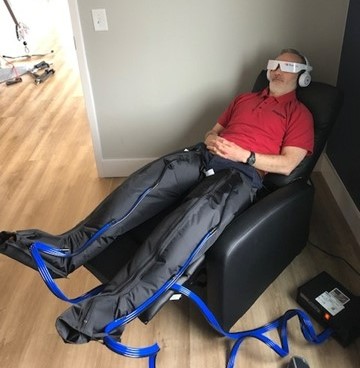Written By: Mark Murphy, PT, MTC
 We are all very blessed to be able to help a large variety of patients in different stages of life in various settings. What do they all have in common besides watching Inventing Anna? SLEEP!
We are all very blessed to be able to help a large variety of patients in different stages of life in various settings. What do they all have in common besides watching Inventing Anna? SLEEP!
Sleep is the one common theme that links all of us from baby to midlife to old age and all the many stages in between. Whether you work in a hospital, outpatient or pediatrics, sleep has significantly impacted the last patient you saw today! We might not think we are qualified to talk to our patients about sleep but guess what. We are and who else is going to? Both the APTA and the AOTA have sleep positions and how our professions can help with sleep.
Every week I am asked about some aspect of sleep. Here is a story to illustrate.
A good friend referred his mom who had regressed in the past few years from a vibrant, healthy 72-year-old lady who loved playing tennis to a stiff, painful, and unstable 72-year-old grandma. After a few visits and her having a particularly rough night, she asked me how much sleep she should be getting.
I asked her how much she was getting and what a typical night look like for her and this was her response. She got about 5 hours and went on: “Well I have a glass of wine at dinner, watch TV and play on my iPad for a few hours while having one more glass and some dark chocolate. Then I go upstairs to read on my iPad with my heating pad and take about 2 hours to fall asleep. Pain and my bladder wakes me up a few times a night and takes about a ½ hour to fall back asleep then wake up feeling worse.” Your patient might not be telling you, but they could be experiencing something eerily similar.
So Helen and I had a conversation while she was cooling down and we discussed some options she could try to help her have more restful, regenerative sleep. We told her about the blu light emitted from her TV and iPad and how it suppresses the release of the hormone that helps her feel sleepy Melatonin. We asked her to have at least a ½ hour of non-screen time before bed or try some blu light glasses. We also talked about how alcohol limits the amount of deep restorative sleep she was getting each night. She was also surprised to hear that most chocolate actually has caffeine in it too. She was happy to hear more about some different positions and some pillow props she could use as a side sleeper for her back. Lastly, we asked her if her grandchildren had a bedtime routine. She of course said yes, and we discussed what she thought she could use as her bedtime routine to let her mind realize it was time to start winding down. She even started some mindfulness and meditation too.
After 2 weeks, Helen was happy to report she was sleeping through the night, waking up less stiff, getting 7+ hours, and feeling better. Now that is great therapy! If you are interested in learning more about sleep and proper positions, check out my online course, Improving Sleep Patterns.
Explore online continuing education courses from Mark below:
